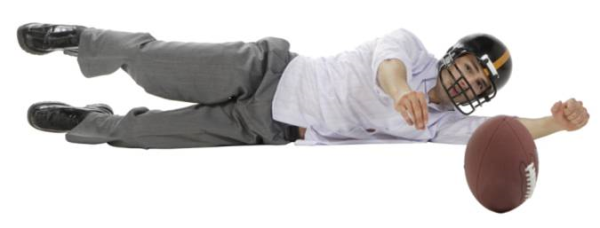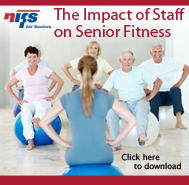 I attended a webinar a few years ago that suggested that the holiday season now extends from Halloween until the first Sunday in February when we gather ‘round a screen and raise a beer to the football God’s to watch the “Big Game”. During this 13 week stretch, which is a quarter of year, we encounter candy dishes, cookie trays, cheese platters, and punch bowls overflowing with seasonal treats and goodies. The number of temptations we face should make us wizards of refusal for those of us trying to control our weight, but saying no to creamy dips or bacon wrapped anything can be very difficult.
I attended a webinar a few years ago that suggested that the holiday season now extends from Halloween until the first Sunday in February when we gather ‘round a screen and raise a beer to the football God’s to watch the “Big Game”. During this 13 week stretch, which is a quarter of year, we encounter candy dishes, cookie trays, cheese platters, and punch bowls overflowing with seasonal treats and goodies. The number of temptations we face should make us wizards of refusal for those of us trying to control our weight, but saying no to creamy dips or bacon wrapped anything can be very difficult.
On Sunday, February 2nd many of us will once again find ourselves in the end zone of a bountiful buffet of wings, chili, pizza, and seven layer taco dip. If you resolved to lose some weight this year or just want to practice better self-control it’s time to step up to the line of scrimmage and play some defense. Below are tips that can serve as a game plan for keeping you on track at home, at a party, or anytime you’re facing an event where food is the MVP. Additionally, these tips are realistic, meaning you won’t see me recommending a scoop of fro-yo with some fresh berries at half-time (which I have actually seen as a suggestion). That is an excellent dessert option, if that’s want you really want, but the last time fro-yo was offered at a football watch party was never!
Here we go!
Don’t try to “save” calories for the party. This means, and I’m speaking from experience, that you eat almost nothing for the first part of the day so you can indulge come game time and not ruin your diet. This is a really bad idea. Frequently this approach leads to over-indulging and eating several hundred if not thousands of calories over what you would have consumed if you had just eaten as you normally would during the first half of the day. Wanting to eat a little lighter at the beginning of the day, think vegetables and protein, isn’t a bad idea but going into game time with and empty stomach can really backfire.
Create boundaries. Creating boundaries means limiting your availability to tempting foods. For me these foods are sweet, offer a satisfying crunch, and are small enough to pop one, two, or twelve in your mouth in no time. To prevent over-eating these foods that light up all the pleasure centers in my brain I stay out of the kitchen or away from the buffet table. Once my plate is full I don’t go back for a second pass. My plate, not the entire chip bowl, is my boundary. For an extra precaution I may only eat dessert as I’m heading out the door.
Keep your hands occupied. This tip relates back to tip number 2. I’m less tempted to go back to the buffet table if I’ve got my hands and head occupied. For this reason I keep a cup full of water in my hands all the time. In addition to being calorie free the water helps keep me satisfied during the party and the cup keeps my hands from finding its way back to the nachos.
Make and vocalize your plan to someone else. You probably set some goals on or just before January 1st, but did you ever right them down? Did you take the time to specifically make a plan for reaching you goals? If not, it’s not too late. Write down your goals and make them specific. What do you have to do to reach your goals? If you have to lock yourself in your house and never attend a party again that is probably not realistic. Tell a friend, partner, or spouse about your goals and don’t forget to discuss how they affect what you eat and drink at the parties. Ask your confidant to encourage your or even join you in making the best choices when it comes to food and drink. If you declare you only be drinking water for the evening, ask him or her to hold you accountable.
Let these tips remind you that eating healthier doesn’t mean you never get to go to parties. Instead you now have some new, realistic, behaviors to take with you and practice. Let these behaviors help keep you on track rather than distract you from your goals. Also remember that like any athletic skill practice is important for success. Sometimes we have a bad game but that doesn’t mean we should hang up the cleats and give up, instead we learn and we continue to practice and sharpen our skills.
Check out our blog on Monday morning for post game diet damage control tips!

 Let me start by saying I’m not here to dog personal training. There is absolutely a niche for that fee-based service, and there is clearly a clientele for it. It should definitely remain an option in fitness centers.
Let me start by saying I’m not here to dog personal training. There is absolutely a niche for that fee-based service, and there is clearly a clientele for it. It should definitely remain an option in fitness centers.

 Part 2: Eight Strategies to Bring About Successful Collaboration
Part 2: Eight Strategies to Bring About Successful Collaboration Part 1: Who Should Be Contributing to Resident Wellness?
Part 1: Who Should Be Contributing to Resident Wellness? If you have residents who want to use the fitness center at your community but aren’t sure how to get started safely, you may have given some thought to adding a fitness center manager who can provide that individual attention for your residents. Perhaps you’re unsure about where to start looking for your fitness center manager and what types of things they should be doing while they’re on the job. Read on to learn about four key job responsibilities we think your fitness center manager should be executing often and well.
If you have residents who want to use the fitness center at your community but aren’t sure how to get started safely, you may have given some thought to adding a fitness center manager who can provide that individual attention for your residents. Perhaps you’re unsure about where to start looking for your fitness center manager and what types of things they should be doing while they’re on the job. Read on to learn about four key job responsibilities we think your fitness center manager should be executing often and well.
 NIFS was thrilled to begin fitness management services at two new retirement community client sites in April. Furthermore, we were honored to be able to tailor our staffing services for the unique needs of each location. Community fitness and wellness programs can’t be addressed with a cookie-cutter approach. Read on to learn how NIFS is supporting the unique needs of each location and their residents.
NIFS was thrilled to begin fitness management services at two new retirement community client sites in April. Furthermore, we were honored to be able to tailor our staffing services for the unique needs of each location. Community fitness and wellness programs can’t be addressed with a cookie-cutter approach. Read on to learn how NIFS is supporting the unique needs of each location and their residents.
 We sit. Frankly, we sit a lot. We sit at home, we sit on our commutes, we sit at work, we sit during our child’s after-school activities. Sit, sit, sit. And it’s not doing us any favors, either. In fact, recent startling statistics indicate that sitting may be a significant threat to our overall wellbeing.
We sit. Frankly, we sit a lot. We sit at home, we sit on our commutes, we sit at work, we sit during our child’s after-school activities. Sit, sit, sit. And it’s not doing us any favors, either. In fact, recent startling statistics indicate that sitting may be a significant threat to our overall wellbeing.
